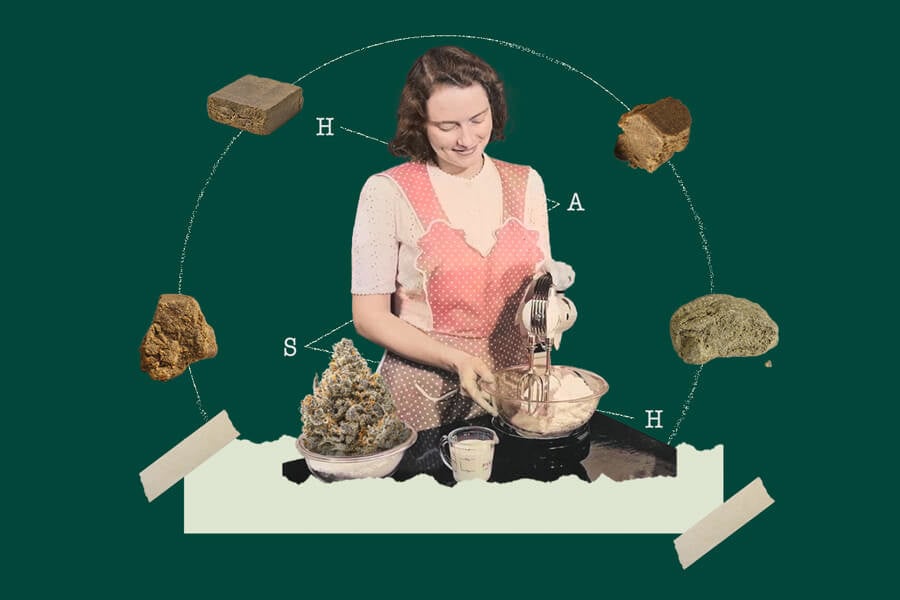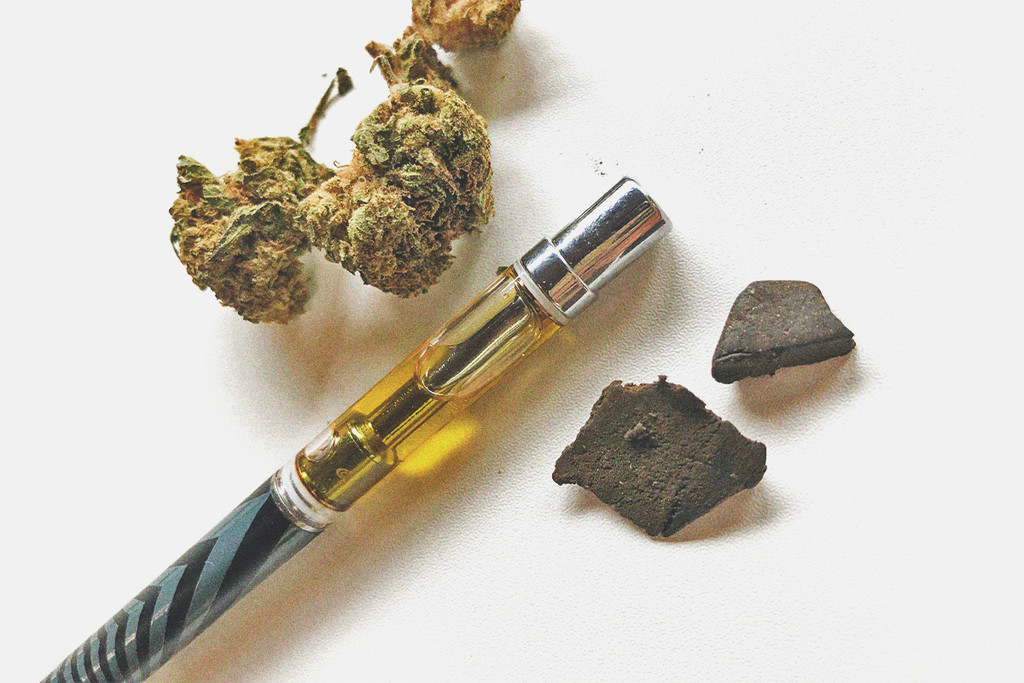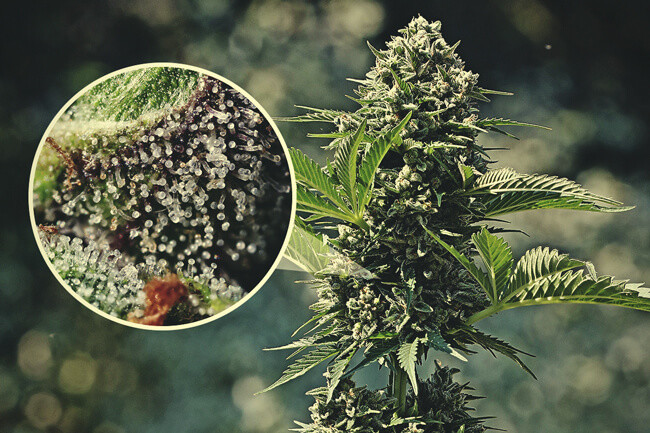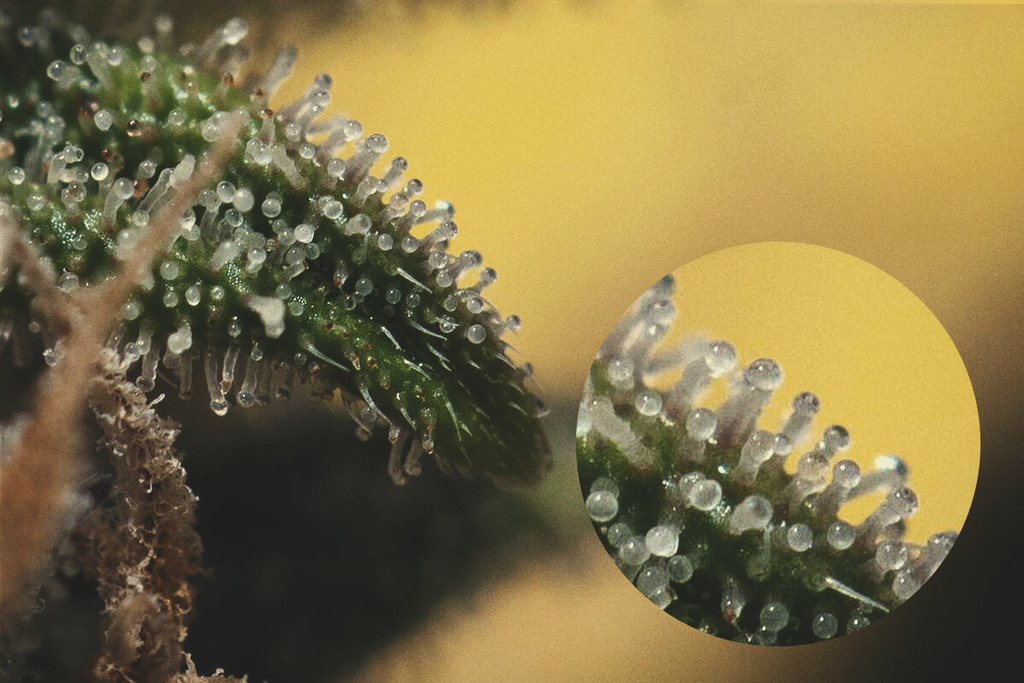.
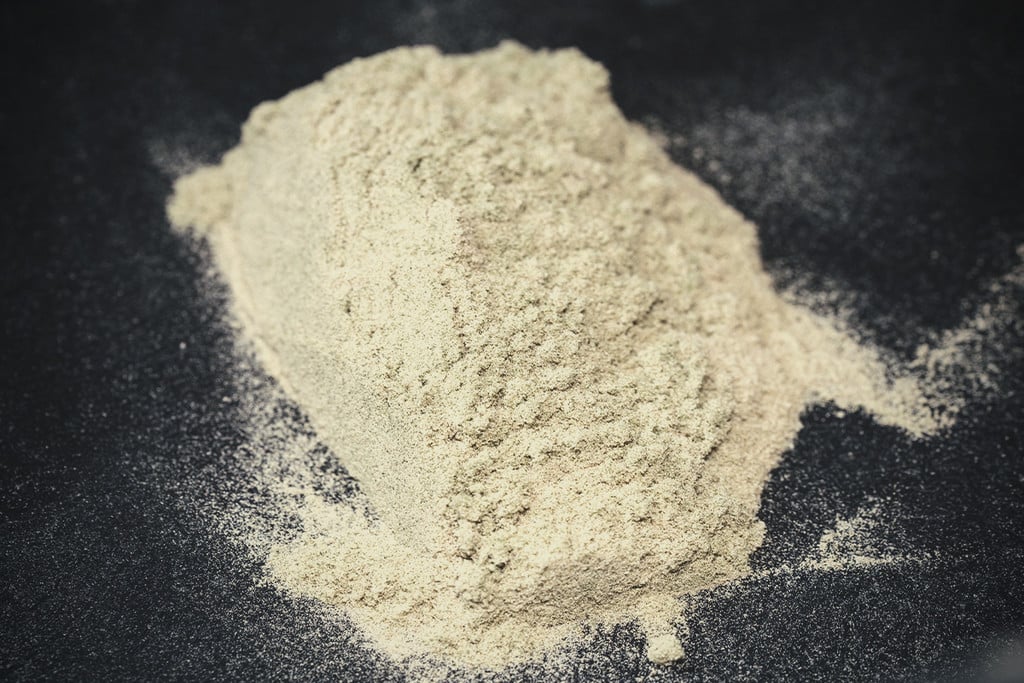
How to Make Dry Sift Hash
Making dry sift hash at home is very easy—provided you have the right equipment. A step up from kief, dry sift hash requires a mesh filter to obtain the highest-quality material that can be dabbed, smoked, or even used to make edibles.
Contents:
Dry sift hash is one of the easiest and safest concentrates to make yourself. The process is as simple as detaching trichomes from your cannabis buds through a series of screens that vary in size. Once the trichomes are separated and collected, dry sift hash can be smoked on its own, sprinkled on or in joints, dabbed for an extra-intense effect and flavour, or used to create almost any edible you can think of.
What Is Dry Sift Hash?
Hash is a term used to describe any type of homogenous extract made chiefly of trichomes—the small glandular structures that produce cannabinoids and terpenes. Traditional hash is made by collecting resin from dried cannabis flowers and compressing it into spheres or blocks. The result of smoking this substance is an intense, euphoric high, courtesy of the high concentrations of cannabinoids and terpenes.
Dry sift hash is just another variation on the hash theme, although there are some distinctions from other types. Essentially, dry sift hash is glorified kief. Kief is the extremely fine powder that builds up in the bottom of multi-chamber grinders over time. This kief can be collected to add a bit of extra potency to regular bowls and joints, or you can compress it to make a little hash coin.
This is the theory behind making dry sift hash—although there are more refined and scalable methods for creating an abundance of trichomes than simple grinders. Instead, we use “pollen boxes” with mesh screens.
Fortunately, dry sift is arguably the easiest and cheapest form of hash to make, with a rich and storied history in modern cannabis culture. It is just as potent as the more traditional forms of hash, but the process used to make it is a more recent innovation.

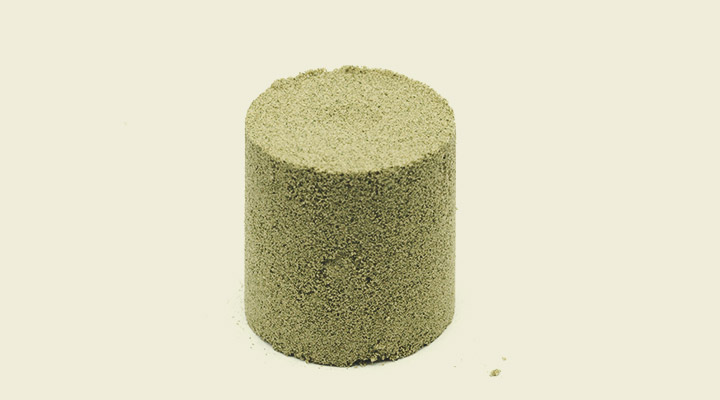
-
Understanding Different Types of Trichomes
In order to understand the concept of quality when it comes to dry sift hash, it’s necessary to be acquainted with trichomes.
Trichomes are mushroom-shaped structures found predominantly on the flowers and leaves of cannabis plants which function like miniature chemical production plants. When viewed with the naked eye, they look like a dusting of sugar or frost on maturing buds.
Trichomes produce a thick resin from which cannabinoids, terpenes, and other metabolites develop. Biologically, this resin is believed to be produced to help the plant ward off predatory insects and protect itself from temperature-related stress.
Advanced microscopic imaging has offered a new perspective on trichomes. So far, scientists have identified three different kinds of trichomes. At present, it is unclear if different trichomes produce different metabolites. That said, we do know that some types produce greater concentrations of metabolites than others. Here’s a brief breakdown:
- Bulbous: These are the smallest of the three, and produce a limited amount of metabolites.
- Capitate-Sessile: These are identified by their spherical head sitting atop a short stalk. The head features a ring of secretory cells and cavities that contain metabolites. Capitate-sessile trichomes tend to develop more metabolites than bulbous, but less than capitate-stalked.
- Capitate-Stalked: These have a circular head or cap that sits on a longer stalk than sessile trichomes. They also sit higher above the surface tissue of the plant and develop on flowers from sessile-like precursors as buds begin to bloom. Capitate-stalked trichomes tend to develop the highest concentrations of cannabinoids and terpenes.
-
Dry Sift Hash vs Kief
Although some use the terms interchangeably, there is one main difference between dry sift hash and kief—how it is made. Kief is easier to make (just use your grinder), less refined, and performed on a smaller scale.
Dry sift hash is also easy to make, but it requires a different kind of process that requires several steps and a bit more equipment. Apart from that, kief tends to describe the pile of dislodged, unrefined trichomes itself, whereas dry sift hash describes the end product—kief that has been collected, refined, and potentially compressed into a mass, or further refined into rosin.
Different Melts of Dry Sift Hash
This brings us to the discussion of “melts”—the grading system used to determine the quality of hash. Melt is seen as an indicator of quality as it reveals how much plant material, waxes, etc. remain in the end product. As such, hash is graded into three categories: full-melt, half-melt, or kief.
Full-melt is of the highest quality, and it can be dabbed or vaporised completely without leaving behind any residue.
Half-melt hash does not vaporise as well, but it is great for adding to a bowl or crumbling into a joint for an extra bit of cannabis goodness.
Kief is the lowest grade of dry sift, as it has not been refined at all, aside from being subjected to your grinder. Unlike the higher-grade melts, kief does not melt, but rather crackles and burns when smoked.
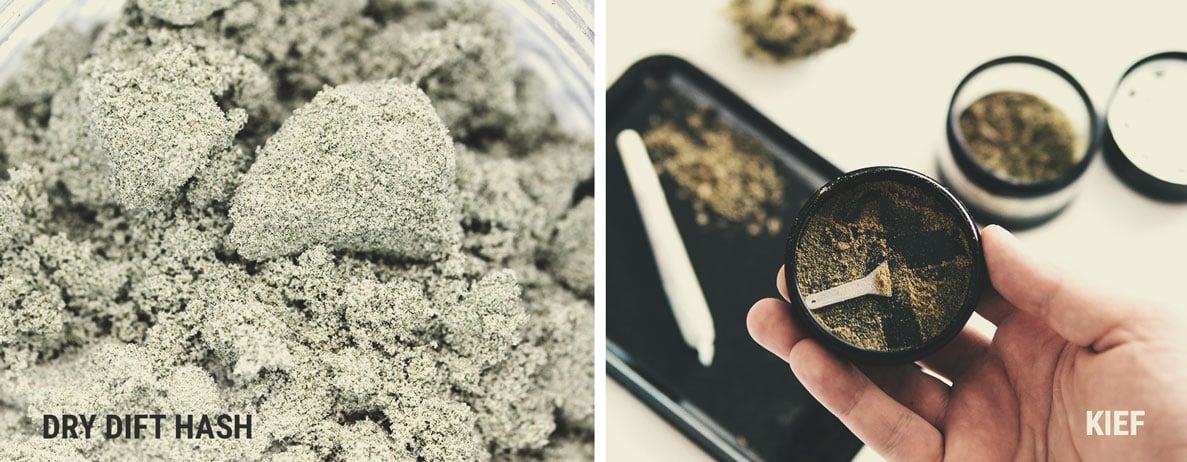
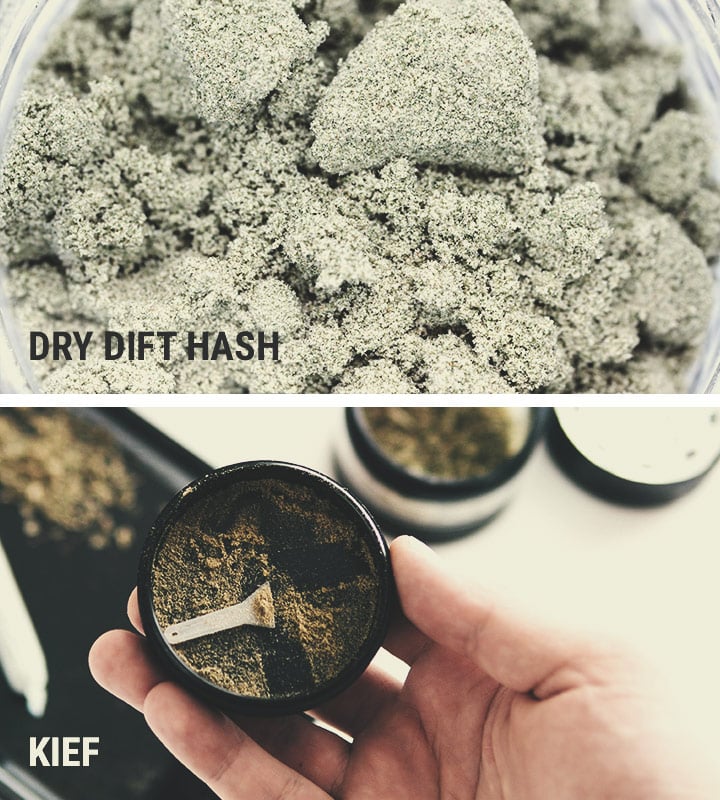
What Are the Benefits of Dry Sift Hash?
Dry sift hash is a flexible cannabis concentrate with many different uses. Here are a few of the benefits of making and using it.
✔️ Easy, safe, and cheap to make
✔️ Good way to use excess cannabis trim
✔️ Can be used in joints and blunts for an extra kick of potency
✔️ Can be dabbed if sufficiently refined (more on this later)
✔️ Can be decarboxylated and used to cook kick-ass edibles
How to Make Dry Sift Hash
Making dry sift hash is remarkably like making kief, but instead of a grinder, you will need to buy or make a pollen box, tailor-made micron extraction bags, or some other type of sifter box.
A pollen box is basically a mesh grid and a collection chamber all in one. It looks like a box (usually made of plastic or wood) and uses mechanical agitation to filter the trichomes. Fortunately, pollen boxes tend to be fairly inexpensive, so it’s worth picking one up if you plan to make dry sift on a somewhat regular basis.
Some experienced hash makers use a series of pollen boxes or filter bags with successively smaller mesh sizes to separate the trichome heads from any excess plant material for the most refined product possible.
-
What Micron for Dry Sift Hash?
Micron bags or screens are referred to by the size of the openings in the threads of the mesh that make them. One micron (µ) is about 1/1000th of a millimetre.
You can find these kinds of specialty bags on the internet relatively easily, but it is important to find ones with the right micron sizes.
Most people who make dry sift hash look for micron bags in the 25–50µ range. The smaller the size of the mesh, the higher the quality of the hash (that’s your full-melt stash), if you do not mind sacrificing quantity.
Dry Sift Hash: Step-by-Step Instructions
Now we can review the process of making dry sift hash at home. All you really need is some bud, your pollen box/micron bags, and something to collect your kief with (like a card or knife).
-
Step 1: Prepare Cannabis Material
For the highest quality and quantity of hash, it’s best to start out with a good amount of plant material. Whether this is dried and cured buds or leftover trim from your last grow, you want to have enough to make the process worth your time. We recommend at least 28–50 grams, if not significantly more. The good thing about making dry sift is that it is pretty easy to scale the equipment if necessary.
If using buds, note that they should be broken down somewhat to expose more of the surface area to the mesh. You definitely don’t want to grind your bud before sieving it, but you should break it up into smaller chunks.
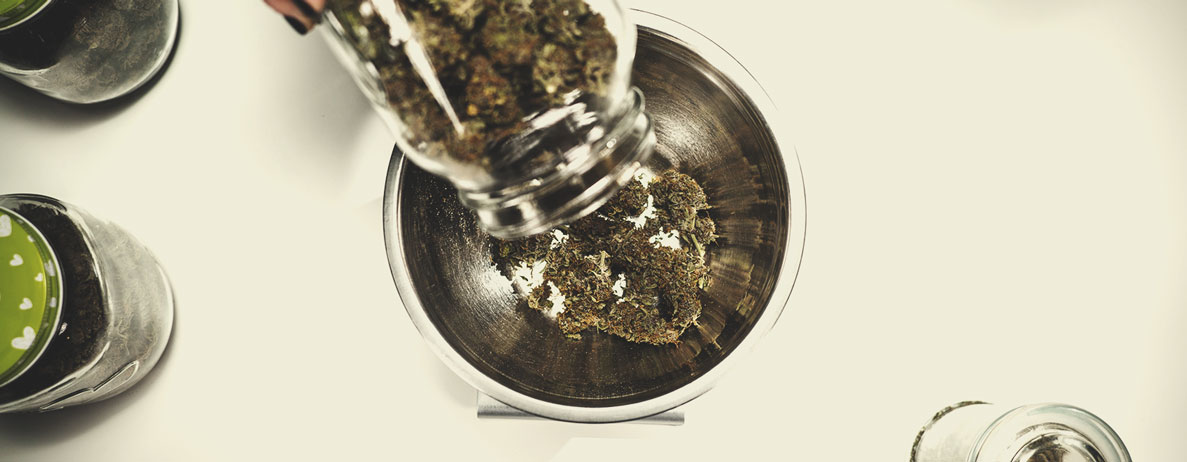
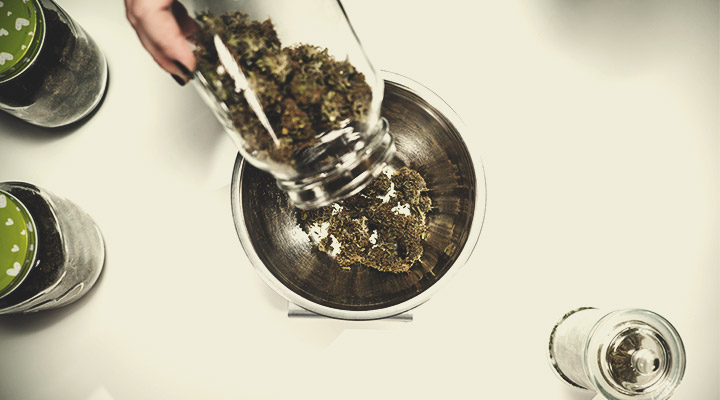
-
Step 2: Freeze Your Plant Material
Want to make the process easier and generate better results? Then you should consider freezing your bud beforehand. Throw your plant material in the freezer for 24 hours before you start the dry sift process. This will make the trichomes brittle and much easier to dislodge once you start sifting.
Likewise, many hash makers find that it is better to process this kind of hash in a colder environment—like an air-conditioned room. This keeps the flowers and trichomes firm, dry, and prevents them from sticking together.
-
Step 3: Prepare Pollen Box / Extraction Bags
Now, get your pollen box or series of micron mesh bags ready. Make sure whatever you’re using to sift the material is robust and has a collection chamber at the bottom. You don’t want to lose any trichomes during the process.
To make a finer grade of dry sift hash, use several pollen boxes or multiple micron extraction bags with successively finer mesh. This will make for the highest-quality product, and will give you different grades of dry sift hash to work with.
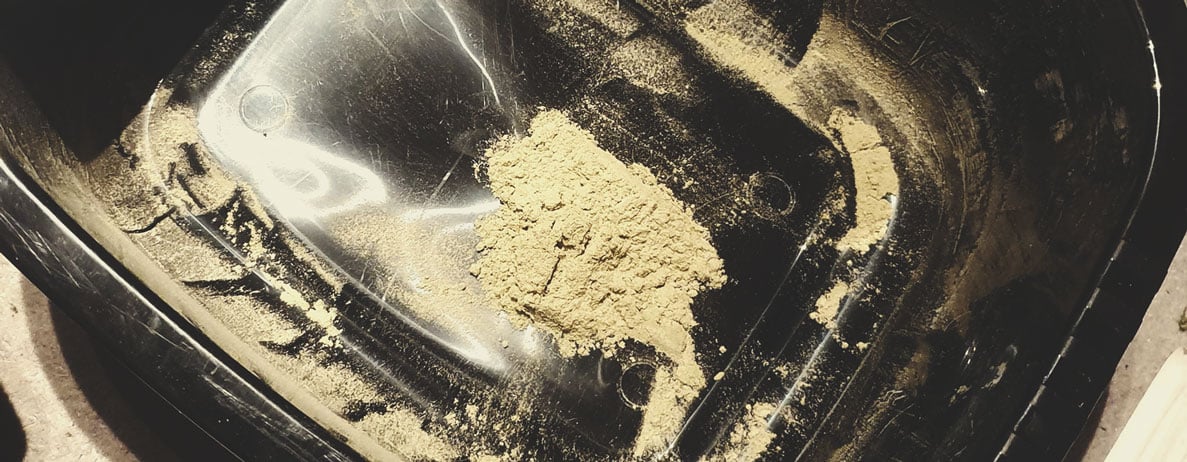
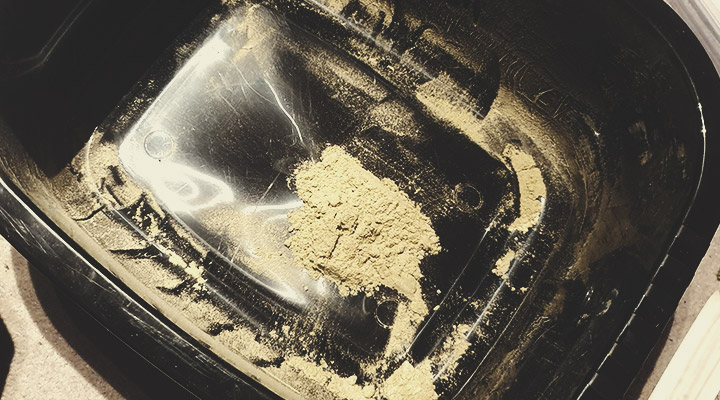
-
Step 4: Start Sifting
Start by placing a few handfuls of frozen flower/trim onto the mesh surface of the pollen box, or into the first micron bag.
Shake the box/bag from side to side and backward and forward. A fine layer of trichomes will begin to form at the bottom of the catch tray. You may need to roll or “card” the buds—that is, apply pressure, such as via a credit card, to continue breaking the bud down and exposing more trichomes to the mesh.
Repeat as necessary until you achieve the desired amount of trichomes.
Depending on how large your stash is, and how small your pollen box/micron bag system is, this process can take half an hour or more to get a really good return.
-
Step 5: Careful Collection
Now it’s time to collect your pile of trichomes by removing the catch at the bottom of the pollen box and using a fine-edged instrument to scrape the dust to a separate collection box.
From here, you can compress your dry sift, sprinkle it onto bong bowls, or refine it further using more high-tech extraction techniques.
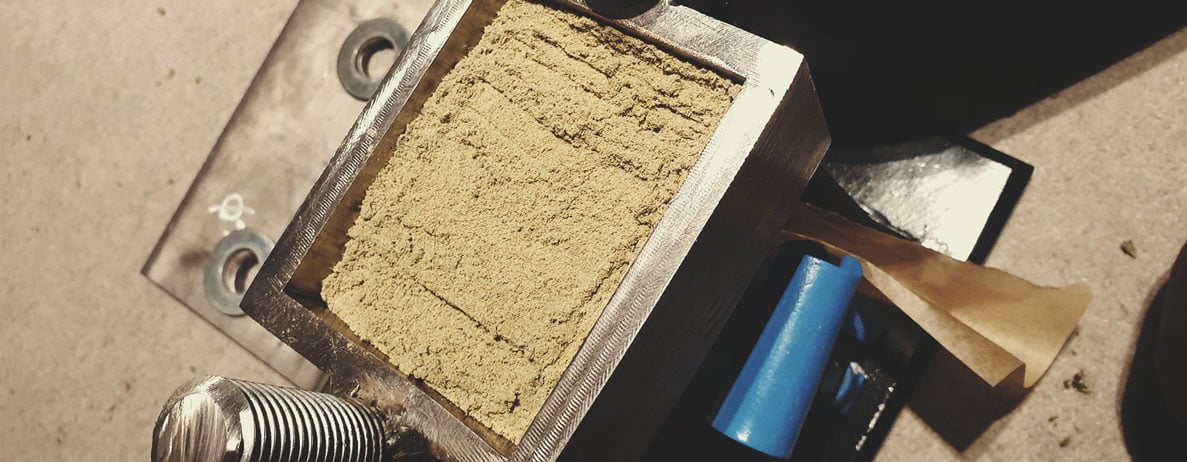
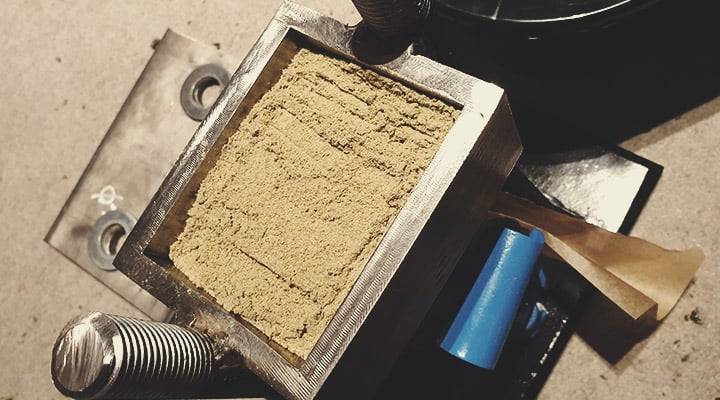
What to Do With Dry Sift Hash?
Good dry sift hash has the quality of sand. It should smell like your bud, but slightly more intense. This is a wonderfully versatile cannabis extract that you can do all sorts of fun things with. As mentioned, you can add it to joints or even cook with it. Here are some other common uses of dry sift.
-
Can You Press Dry Sift Hash?
Yes, you can press dry sift hash. It is usually pressed into so-called hash coins using a pollen press, or it can be pressed into rosin using a dedicated heat press or hair straighteners. Pressing your hash into coins is recommended if you are planning to store your product for an extended period. The reason is that only the outer layer will be exposed to oxygen, protecting the interior from premature degradation.
-
Can You Dab Dry Sift Hash?
You can dab dry sift hash, but you need to press it before you do so. Dabbing is only good for the highest-quality, connoisseur-grade hash, so make sure to limit as much plant material as possible.
How to Store Dry Sift Hash
Your dried and pressed hash now needs to be stored. It should be kept in an airtight container and then placed in the fridge. This will keep it at the same consistency and slow down the degradation process. If you only plan to keep your hash for a few days, you can store it in a cool, dark place outside of the refrigerator.
If you follow these procedures, your dry sift hash should last for a long time—unless, of course, you use it all in the meantime.
Hash aficionados may debate the superiority of bubble hash over dry sift hash, yet most people who make it find the process of dry sifting to create a superior product in the end. Regardless, making dry sift is a safe, fun, and relatively inexpensive way to make hash at home. Give it a try!


























